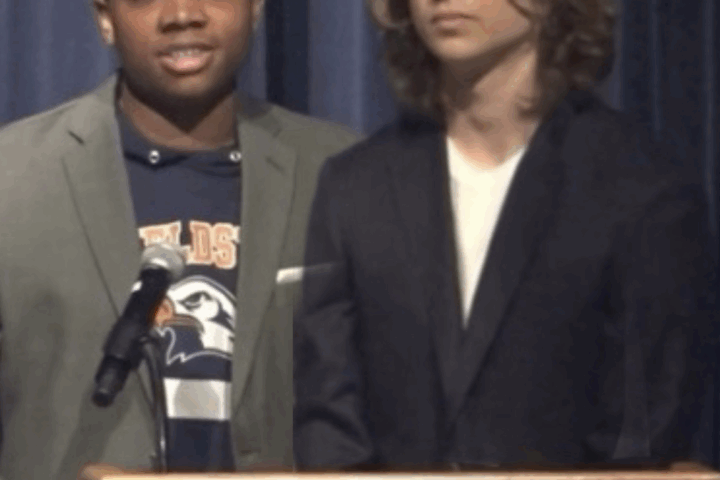In the November 17 issue of The Fieldston News, there was an article written regarding the Master Plan, an architecturally based proposal on how to better Fieldston as a school. The article brought up some valid concerns about the motivation behind the Master Plan, and expressed some hesitation about whether these motives were realistic. Will Adler Labs (proposed spaces designed for interdisciplinary hands-on learning) really encourage more student collaboration? Maybe not. Will building new science labs really revitalize the sciences at Fieldston? Maybe not. Could the architectural advances made through the Master Plan end up being a colossal waste of money? It’s certainly possible.
There are many things about the Master Plan, and by extension the Strategic Plan that can be reasonably criticized. However, while it is essential to always have a dialogue, I believe some criticisms of the Plans, from both students and teachers, reflect a misunderstanding of the motivation behind the proposals.
First of all, it is necessary to define what the Strategic Plan and the Master Plan are. Often these terms are used interchangeably, but they are two different things. The Strategic Plan outlines the priorities of the school’s future endeavors. I spoke to Head of School Damian Fernandez about these priorities.
“The big three priorities [of the Strategic Plan] are: excellence in progressive education; re-embracing Ethics, which includes committing to financial aid,” he said. “The third piece that we are committed to is to take care of our resources.”
Fernandez emphasized that part of taking care of resources involves attending to our campus. “We stand on principle that we need to take care of our buildings,” he said. This is where the distinction between the Strategic Plan and the Master Plan is pivotal. As Co-Chairman of the ECF Board Robert Pruzan put it, “The Master Plan is one component of the Strategic Plan.” Essentially, he tells me, the Master Plan addresses the physical space at Fieldston, while the rest of the Strategic Plan addresses other aspects such as curriculum and financial aid. “The Master Plan fits into the Strategic Plan,” Mr. Pruzan said, “in that it is an attempt to facilitate interdisciplinary work, which is a key tenet of the Strategic Plan.”
It would be disconcerting if the decisions that created these priorities were resolved behind the closed doors of the ECF Board Room or the Head of School’s office, but Dr. Fernandez stresses that this is not the case. “We had hundreds of people participate in the Strategic Plan,” he said, “It was a very democratic process.” There were five task forces involved in the development of the Strategic Plan, with faculty, administrators, board members, parents, and of course students, involved in each. “This is truly a community affair,” Fernandez noted. He went on: “The process has been inclusive and transparent, but of course that doesn’t mean that everyone has to agree. It’s not a good thing when everybody agrees.”
Before I go on, I would like to reinforce this sentiment. The point of this article is not to accuse as baseless anyone who dislikes or criticizes the Strategic or Master Plan. There are certainly many valid concerns that can be raised about these projects, but it is critical that the student body is informed about what they may criticize.
There seems to be some concern over how much money is being spent on the project, and furthermore, could this money be spent on a “better” cause, namely, increasing financial aid. Before making this criticism, it is crucial to know a few things.
First of all, Dr. Fernandez informed me that our financial aid fund is unparalleled among New York City high schools. “The total [financial aid budget] this year was the top of any school in the city – 12.3 million dollars.” He continued: “Since I’ve been here, I’ve made it a priority for us to try and increase our financial aid.” Perhaps most significant is the comparison between the financial aid budget and tuition increases, because if the latter outpaces the former, the progress made is essentially void. Fernandez was blunt when I brought this up. “Our financial aid budget has out-paced tuition increases.”
Furthermore, raising money for the projects outlined in the Master Plan goes hand in hand with money raised for financial aid. Mr. Pruzan elaborates: “The capital campaign that will be funding the Master Plan will also be raising a considerable amount of money for financial aid. The goal is for approximately half of all the money raised to go toward increasing the financial aid budget.” Dr. Fernandez expatiated on this goal. “[Through this capital campaign], we have committed to raise between 25 and 30 million dollars more for our financial aid endowment.”
Another criticism of the Master Plan that I have encountered recently is that these updates are moving Fieldston in the wrong direction. I have heard claims that the plans to update our science labs stem from a desire to be more competitive with schools like Horace Mann or Trinity, and that as a progressive institution, we shouldn’t be doing this. I have heard people declare that these proposals go against Fieldston’s roots.
Fieldston’s roots are a commitment to progressive and hands-on learning. Felix Adler said, “Object creating must supplement object teaching.” Science laboratories are one of if not the paramount place where hands-on learning takes place, and by updating them, we will be encouraging students and teachers alike to utilize these spaces for practical, active learning. These updates, I believe, are thoroughly necessary. As Dr. Paul Church, Science Department chair and co-leader of the Science/Math task force, put it, “We are attempting to perform 21st century science in 19th century classrooms.” He went on: “Our students and faculty do amazing things every day. We owe it to them to support our programs and encourage collaboration.” Updated science labs will do just that.
While it is certainly valid to criticize the Master Plan, it is invalid is to suggest that the Plan is not progressive. The concept of an Adler Lab is certainly consistent with Fieldston’s mantra of hands-on, collaborative work, and is undeniably progressive. I do not mean to suggest that criticizing the Master Plan represents a betrayal of Fieldston, because another value held dear at our school is discussion. I again want to encourage anyone who has issues with the Master Plan, or the Strategic Plan, or any actions Fieldston takes, to voice their opinions, because as Adam Chan always says, “True discourse at Fieldston is essential.”
However, I think it is important for everyone to examine the basis upon which they are criticizing. If the Fieldston community is discontent with an incredibly progressive proposal, maybe it is time for us to revisit our school’s tradition. Maybe it is time for us to reevaluate what we want from our school, and what we want our definition of progressive to be.





